Learning one dimensional motion using graphs- physics for beginners - part one
Motion in one dimension is simple and quickly learned but sets a base for learning physics
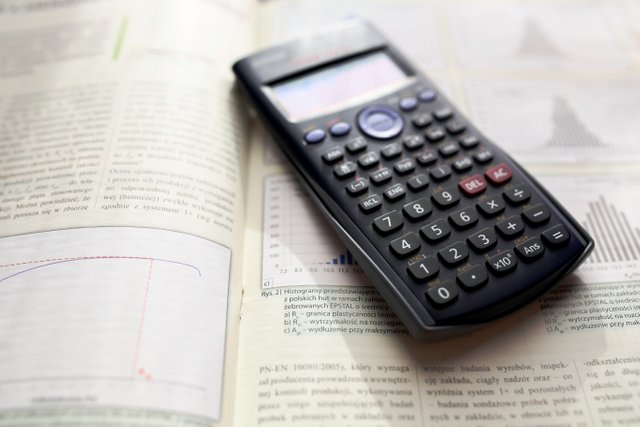
( source)
We pretend all motion is either forwards or backwords
We can simplify the system further by imagining acceleration does not change. If acceleration does not change a one dimensional system only has 4 variables position, time, velocity and acceleration.
Velocity is a direction of movement and a speed
In other words, velocity is the change in position over the change in time. Direction in one dimension is indicated by a positive or negative sign. It is arbitrary but positive it usually to the right.
Let us look at a graph of position over time.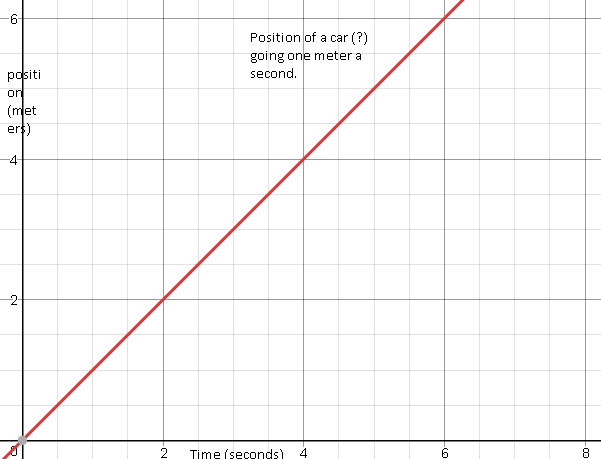
( source)
This (beautiful) graph is of an object moving one meter a second in the positive direction. The change in position over time is velocity, which means that the slope of the graph is velocity.
This could be indicated by the equation: velocity (V) = 1 meter (m) / second (s).
A graph of the slope of that graph would then be velocity.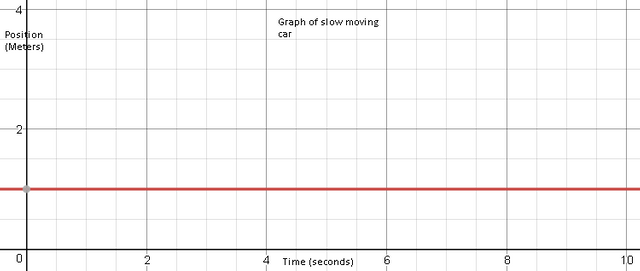
( source not sure what happened to the quality)
The slope is 0 as the velocity stays the same. Notice that the total area under the graph is the change in position.
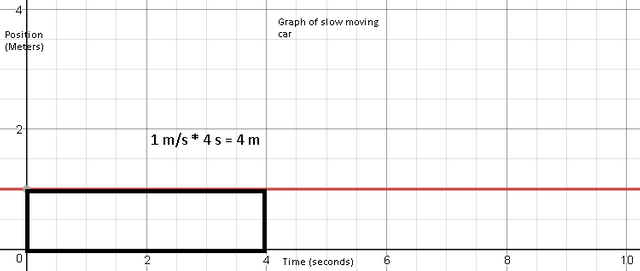
( source )
The area under the graph is as seen above 4 meters. This means you can take a graph of velocity and find the position and a graph of position to find the velocity. You can also find it mathematically, for example, a person running at a constant 5 meters a second would go 50 meters in 10 seconds. A person that moves 10 meters in 5 seconds is going (on average) 5 meters a second. A person need not be going the same speed the entire time.
Acceleration is a change in velocity
Acceleration can be positive or negative. Positive acceleration is usually considered to be going in the same direction of an object, while negative is the opposite direction. Acceleration is the same to velocity as velocity is to position. In other words a graph of velocity over time is acceleration.
Let's look at another example. This time somebody pushed down the gas pedal.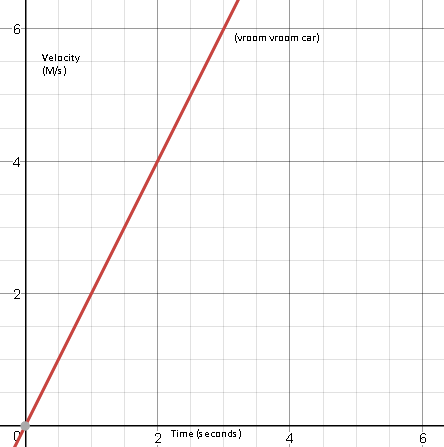
( source )
This person started at 3 m/s but increased his velocity as time went on. Now let's make a graph of the acceleration of the car.
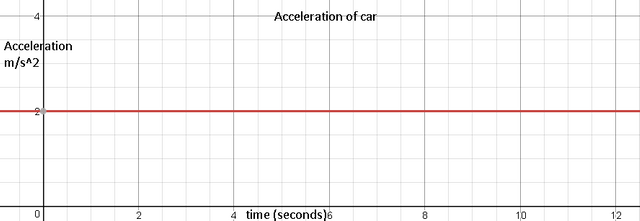
(source)
As you can see the acceleration is the same constant number. Acceleration is M (meters) / s^2 (seconds squared). You multiply time by acceleration to get the velocity or divide time by the change in velocity for acceleration. If the velocity changed by 10 in 2 second, the acceleration is 5 m/s^2.
Now think for a second, what does the change in position look like when an object is accelerating?
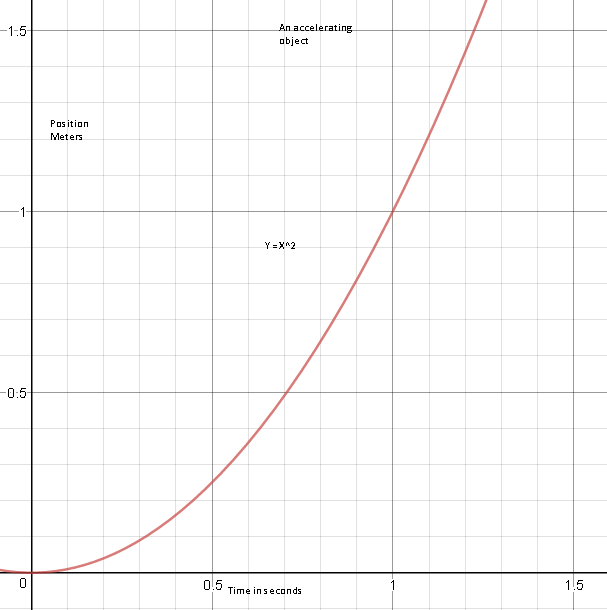
( source)
Let's think about this, the acceleration changes the velocity and then the velocity changes the position. If you change the velocity while changing the position the amount the position changes is forever increasing faster and faster. This means a small amount of acceleration over a long period of time can achieve very high speeds.
Acceleration is m/s^2 (^ means to the power of). Position is just m. To get change in position from acceleration you must multiply by seconds squared but also divide by half. You divide by half because you are taking the average change in velocity. For example if an object is accelerating at 4 meters a second squared at the end of 5 seconds the acceleration would be 5^2 s^2 * 4 m/s^2 * 1/2 = 50 m.
The units used today
position = m (meters)
time = s (seconds)
velocity = m (meters) / s (second)
acceleration = m (meters) / s^2 (second squared)
coming up soon: (order not final)
2d motion
force
momentum
EDIT: posted
Subscribe to see them as soon as they come out!
Thanks for your educational post on one dimensional motion, @anarchyhasnogods!